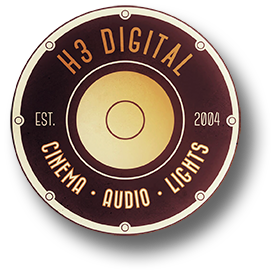Samsung looking at Holographic 3D Tv
Samsung have recently filed a patent application for a Holographic technology to allow 3D images on TVs without using 3D glasses.
The system uses lasers projecting onto holograms to provide depth perception including parallax in front of the TV with better depth perception and less fatigue for viewers.
Below we dive into the patent information with wording from Patently mobile (and link at the end), it's very technical so here's a picture to help.
In Samsung's invention background, they first highlight the negatives of using traditional 3D glasses to view content. Examples of glasses-type methods include deflected glasses-type methods and shutter glasses-type methods, and examples of the non-glasses-type methods include lenticular methods and parallax barrier methods. These methods use binocular parallax, and as a result, it is difficult to increase the number of viewpoints. In addition, these methods make the viewers feel tired due to the difference between the depth perceived by the brain and the focus of the eyes.
From there Samsung notes that holographic display methods, which are 3D image display methods capable of making the depth perceived by the brain consistent with the focus of the eyes and providing full parallax, have been gradually put to practical use.
According to a holographic display technique, when light is irradiated onto a hologram pattern having recorded thereon an interference pattern obtained by interference between object light reflected from an original object and the light, the light is diffracted and an image of the original object is reproduced. When a currently commercialized holographic display technique is used, a computer-generated hologram (CGH), rather than a hologram pattern obtained by directly exposing an original object to light, is provided as an electric signal to a spatial light modulator. Then, the spatial light modulator forms a hologram pattern and diffracts light according to the input CGH signal, thereby generating a 3D image.
A Basic Overview of the System
In Samsung's patent FIG. 1 noted above we're able to see the holographic display apparatus #100 that may include a light source #110 providing light, a spatial light modulator #120 forming a hologram pattern to modulate the light, and a control unit #140 controlling an operation of the spatial light modulator.
The holographic display apparatus may further include an eye tracking unit #130 (e.g., eye tracker) tracking a pupil location of an observer. The holographic display apparatus may further include a Fourier lens that allows the light modulated by the spatial light modulator to be focused at a predetermined space. The modulated light may be focused at the predetermined space by the Fourier lens, and thus a hologram image may be reproduced in the space. However, if the light source provides condensed light, the Fourier lens may be omitted.
The light source may be a laser source to provide light having a high spatial coherence to the spatial light modulator. However, if the light has a certain degree of spatial coherence, since the light may be sufficiently diffracted and modulated by the spatial light modulator, a light-emitting diode (LED) or some other light emitting element may alternatively be used as the light source.
In addition to the LED, any other light sources may be used as long as light having spatial coherence is emitted. Although one light source is illustrated in FIG. 1 for convenience of description, the light source may include an array of a plurality of lasers or LEDs.
Samsung further notes that the spatial light modulator may form a hologram pattern for diffracting and modulating the light, according to a hologram data signal provided by the control unit. The spatial light modulator may use any one of a phase modulator for performing phase modulation, an amplitude modulator for performing amplitude modulation, and a complex modulator performing both phase modulation and amplitude modulation.
Although the spatial light modulator of FIG. 1 is a transmissive spatial light modulator, a reflective spatial light modulator may also be used. The transmissive light spatial modulator may use, for example, a semiconductor modulator based on a compound semiconductor such as GaAs, or a liquid crystal device (LCD). The reflective spatial light modulator may use, for example, a digital micromirror device (DMD), a liquid crystal on silicon (LCoS), or a semiconductor modulator.
The eye tracking unit may obtain an image of the observer through a camera, detect the pupils of the observer from the image, and analyze the locations of the pupils. The eye tracking unit may function as a distance measuring unit (e.g., distance measurer) measuring a distance between the observer and the spatial light modulator. Thus, the eye tracking unit may track a pupil location change of the observer and a change in the distance between the observer and the spatial light modulator in real time and provide a result of tracking to the control unit.
In respect to the control unit 140, it may be configured to generate the hologram data signal according to the hologram image that is to be provided to the observer, and provide the hologram data signal to the spatial light modulator. The control unit may actively control an operation of the spatial light modulator according to the pupil location change of the observer input from the eye tracking unit. The control unit may be implemented by using software or a semiconductor chip functioning as the software.
The application then dives into the operation of the holographic display and lists a series of engineering loving mathematical equations such as the one noted below which makes for dry reading for most.
alpha..sub.i*Re(CGH)+.alpha..sub.2*Im(CGH)+.alpha..sub.3*Abs(CGH) [Equation 8]
Samsung filed their U.S. patent application back in January 2016. Considering that this is a patent application, the timing of such a product to market is unknown at this time.
http://www.patentlymobile.com/2016/11/samsung-sets-their-eyes-on-a-revolutionary-holographic-tv.html

